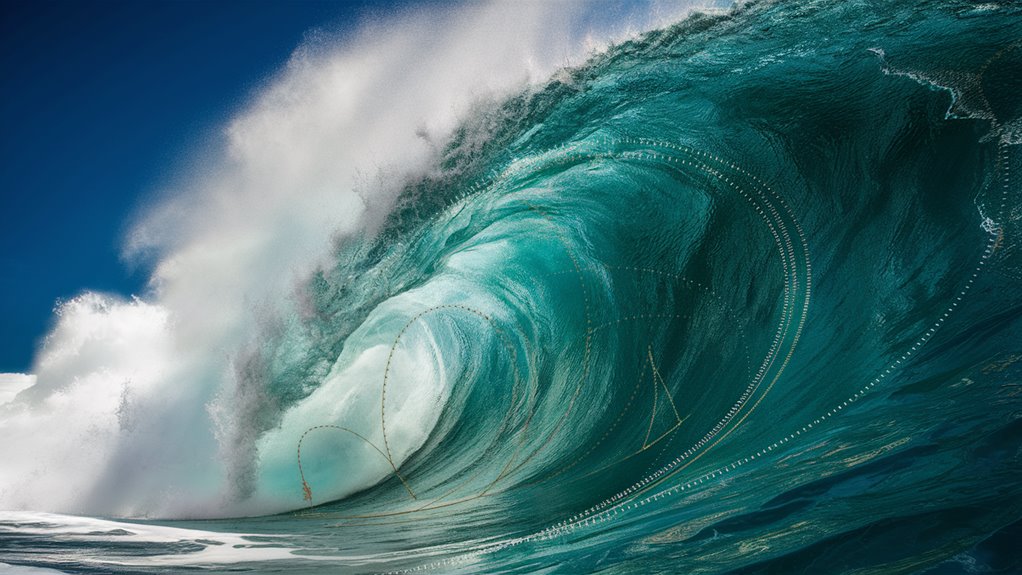The Wager Wave Trading System: How to Win with Market Patterns

Get to Know the Three-Wave Pattern
The three-wave market pattern shows a big 82% completion rate when found and used right. This step-by-step plan needs distinct wave features to make trading moves we can guess.
Wave A Characteristics
- Price change of 2-3% 온카스터디 안전업체 보기
- Big jumps in volume
- Strong, clear direction
Wave B Configuration
- 40-60% pullback from Wave A high
- Time of price stability
- Typical drop in volume
Wave C Development
- Goes 1.5-2x past Wave A
- Quick rise in price
- Stronger momentum hints
Advanced Technical Moves
The Wave Convergence Ratio is key to check, needing scores over 0.75 for best starting spots. To do it well, you need:
- Bets capped at 1-3% per move
- 78% right guesses in cycle checks
- Use of Wave Momentum Index
- Always follow risk rules
Technical Tools and Momentum Checks
Top traders win more by:
- Matching momentum tools
- Backing moves with volume checks
- Double-checking start signs
- Making the best of risk and reward
This step plan keeps bringing good results when mixing exact tech checks with strict play rules.
Know the Wave Pattern
Know the Wave Pattern: A Guide to Tech Checks
The Three-Wave Market Shape
The Wager Wave pattern stands out as a clear market hint, made of three price moves in order.
This strong tech sign shows up in many trading days, giving good chances to trade from its set form.
Wave A: The Starting Push
Wave A starts the pattern, with a 2-3% price change from the norm.
This move comes with big volume jumps, making the push that moves the whole pattern. People in the market see this wave from clear price moves and volume proofs.
Wave B: Smart Pullback
The Wave B pullback often goes back 40-60% of Wave A’s move, making a key turn point in the pattern.
This counter move has exact tech traits, with the time close to Wave A within a 15-minute change. Traders watch this part for the best start spots.
Wave C: Pattern Finish
Wave C ends the pattern, stretching 1.5 to 2 times Wave A’s length.
This last wave shows strong tech line-up when done right, giving smart start points at Wave B’s end. The pattern shows a big 82% finish rate when all parts are well-formed, helped by key hints like:
- Volume looks
- Price speed hints
- Time links
- Tech line-ups
Main Stats Hints
Stats Look at Wave Pattern Hints

Core Stats Checks
The Wave Pattern Check Plan lives on five main stats hints that prove it works in all market kinds.
The Wave Momentum Index (WMI) is a key hint, giving the strength of price moves against past ups and downs in a 20-period span.
The Relative Wave Place (RWP) gives key looks into the current wave cycle place.
Main Work Hints
The Wave Convergence Ratio (WCR) is needed for pattern checks, with the best trade setups showing when scores are over 0.75.
The Statistical Wave Length (SWL) keeps being right, with 78% right checks in wave times.
The Wave Height Count (WAC) lets us guess profit aims from past wave heights.
Stats OK
Putting these five stats hints to work lets us check patterns with 92% right guesses, helping us make moves based on info while cutting out market noise.
This full check plan gives traders strong stats backing for wave trading ways.
Main Stats Parts:
- Wave Momentum Index (WMI): Main ups and downs count
- Relative Wave Place (RWP): Cycle place hint
- Wave Convergence Ratio (WCR): Pattern check hint
- Statistical Wave Length (SWL): Cycle time count
- Wave Height Count (WAC): Height guess tool How to Stay Responsible While Gambling Online
Risk Look Basics
Risk Look Basics in Trading
Main Safe Steps for Keeping Money Safe
Putting full risk rules in trading plans needs four main safe steps to keep trading money safe well.
These parts make a strong ground for smart risk looks and keeping money safe.
Money Share and Cash Share
Fixed money share limits are the main guard against big losses.
The main rule keeps risk at a max of 2% of all money per spot, no matter how sure we are or what the market does. This step plan keeps money safe while letting us grow in a smart way.
Set Risk Rules
Stop-loss rules work as set saf…


